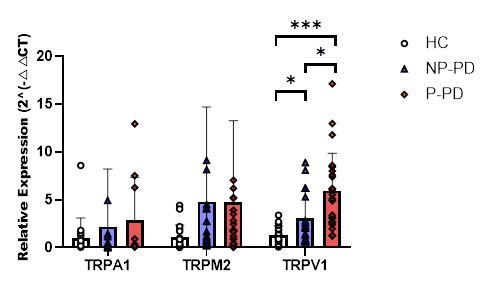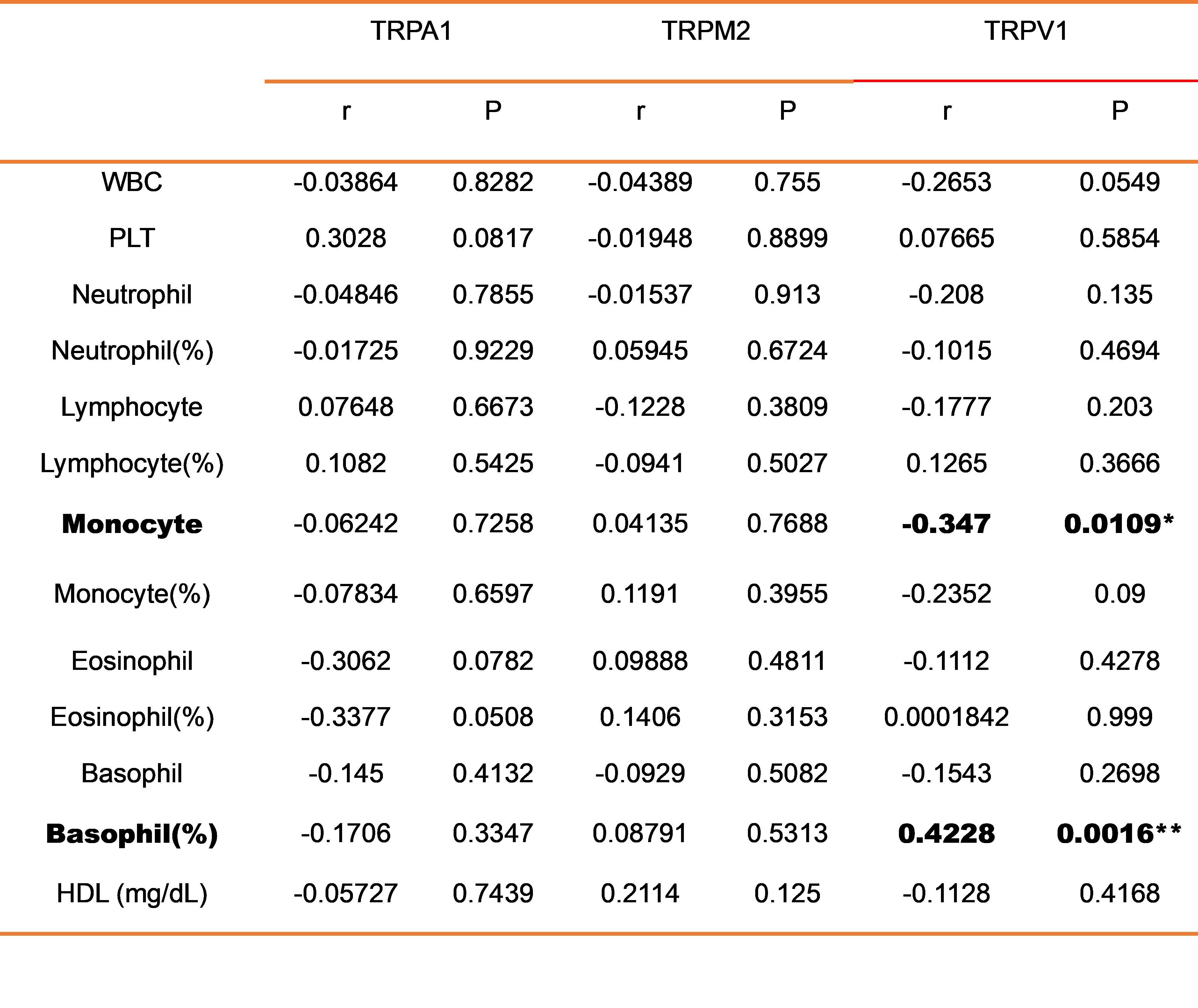Category: Parkinson's Disease: Non-Motor Symptoms
Objective: Unveiling the Pain Mechanism in Parkinson’s Disease: A Path to New Therapies
Background: Parkinson’s disease (PD) are well-known movement disorder. While motor symptoms are a hallmark of PD, a significant portion of patients (up to 80%) also experience pain as a non-motor symptom (1). Emerging research suggests that inflammation may play a key role in both the development and progression of PD (2), as well as in the experience of pain.
Transient receptor potential (TRP) channels are non-specific cation channels. They primarily function as intracellular channels for calcium ions and are activated in response to alterations in the external environment. Notably, TRP channels are known to be involved in both inflammatory reactions and pain perception (3).
Method: Peripheral blood mononuclear cells (PBMCs) were collected from patients with PD and analyzed for TRP channel mRNA expression including Transient Receptor Potential Cation Channel Subfamily A Member 1(TRPA1), Transient Receptor Potential Melastatin-related2 (TRPM2), and Transient Receptor Potential Vanilloid 1(TRPV1) using RT-PCR. The correlation between TRP channel expression and the severity of parkinsonism (the Unified Parkinson’s Disease Rating Scale [UPDRS)], and inflammatory marker were then investigated. Furthermore, Pre-formed Fibrils (PFF)-injected PD mouse models were employed to evaluate pain behavior and TRPV1 expression levels.
Results: Our findings revealed increased mRNA expression of both TRPV1 and TRPM2 in PD patients compared to healthy controls. Notably, TRPV1 expression was significantly higher in PD patients experiencing pain compared to both healthy controls and pain-free PD patients. Additionally, a significant positive correlation was observed between TRPV1 levels and UPDRS score (r = 0.3496, p = 0.0066**). Furthermore, TRPV1 expression showed a positive correlation with the basophil ratio of the leukocytes (r = 0.4228, p = 0.0016**) in PD patients.
In the PFF-injected PD mouse model, both pain behavior and TRPV1 expression were upregulated and correlated with each other.
Conclusion: Given the observed increase in TRPV1 channels in PD patients, known to be associated with both immune response and pain, a close link between TRPV1 and the immune and pain responses experienced by PD patients is suggested.
Increased mRNA of TRPV1 in PD with pain
General Statistics of Patients
Correlation between TRPV1 levels and UPDRS score
Correlation between TRPV1 and inflammatory marker
References: (1) Silverdale MA, Kobylecki C, Kass-Iliyya L, et al. A detailed clinical study of pain in 1957 participants with early/moderate Parkinson’s disease. Parkinsonism Relat Disord. 2018;56:27-32. doi:10.1016/j.parkreldis.2018.06.001
(2) Thi Lai T, Kim YE, Nguyen LTN, et al. Microglial inhibition alleviates alpha-synuclein propagation and neurodegeneration in Parkinson’s disease mouse model. NPJ Parkinsons Dis. 2024;10(1):32. Published 2024 Feb 2. doi:10.1038/s41531-024-00640-2
(3) Koivisto AP, Belvisi MG, Gaudet R, Szallasi A. Advances in TRP channel drug discovery: from target validation to clinical studies. Nat Rev Drug Discov. 2022;21(1):41-59. doi:10.1038/s41573-021-00268-4
To cite this abstract in AMA style:
SJ. Song, YE. Kim. TRPV1: A Potential Therapeutic Target for Inflammation and Pain in Parkinson’s Disease [abstract]. Mov Disord. 2024; 39 (suppl 1). https://www.mdsabstracts.org/abstract/trpv1-a-potential-therapeutic-target-for-inflammation-and-pain-in-parkinsons-disease/. Accessed April 3, 2025.« Back to 2024 International Congress
MDS Abstracts - https://www.mdsabstracts.org/abstract/trpv1-a-potential-therapeutic-target-for-inflammation-and-pain-in-parkinsons-disease/




